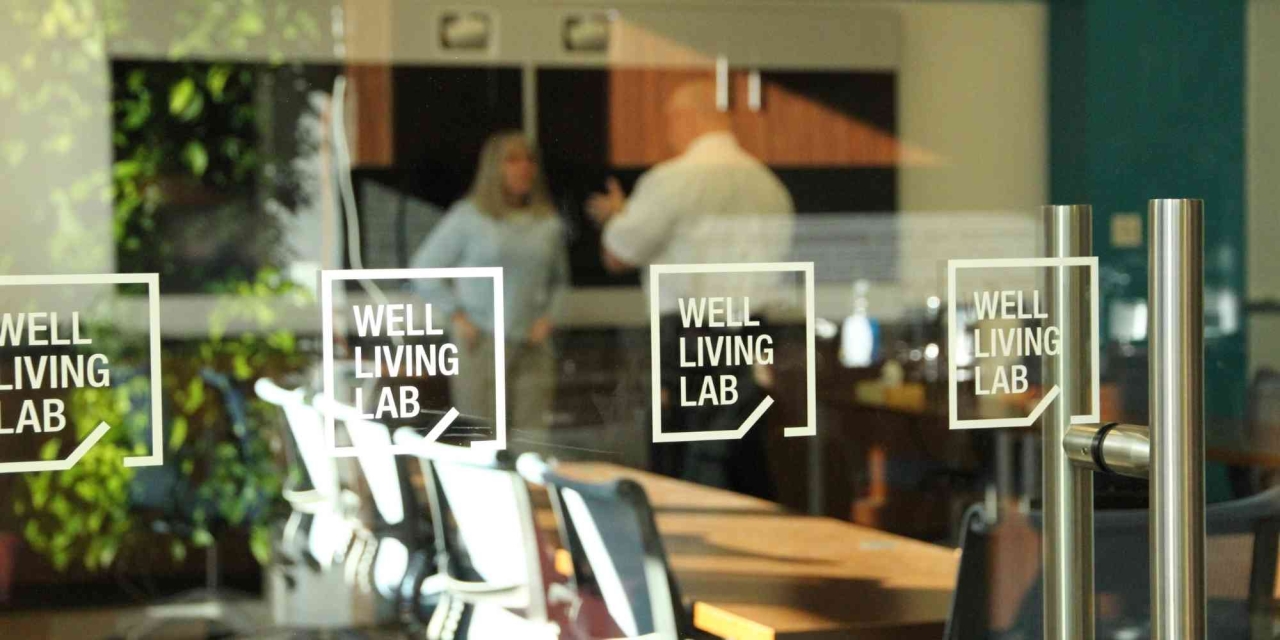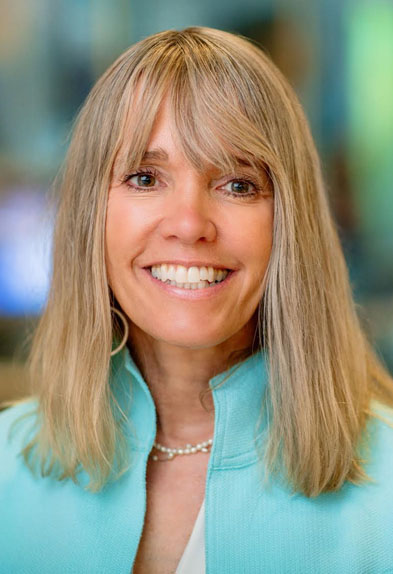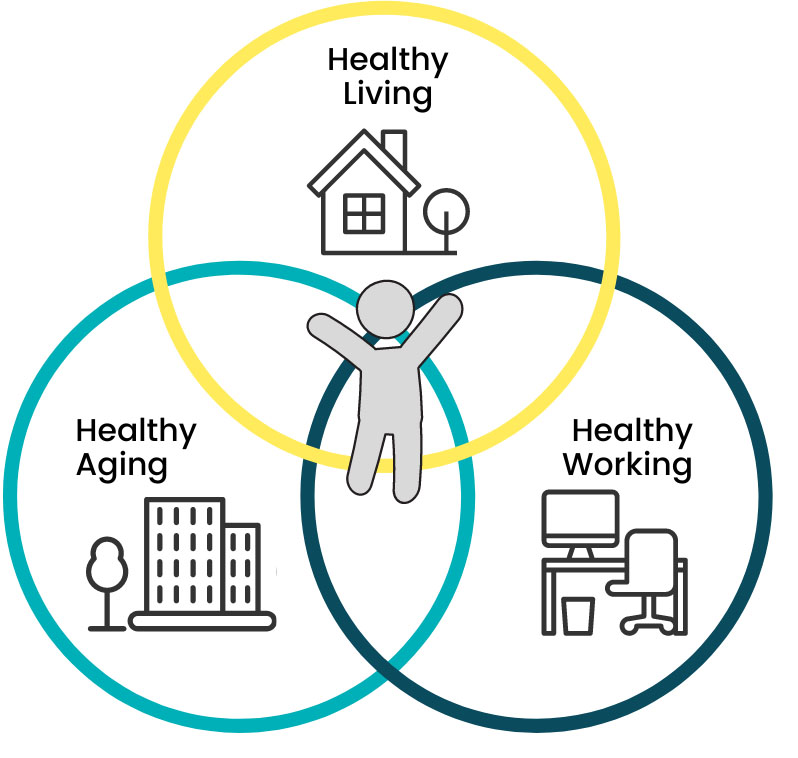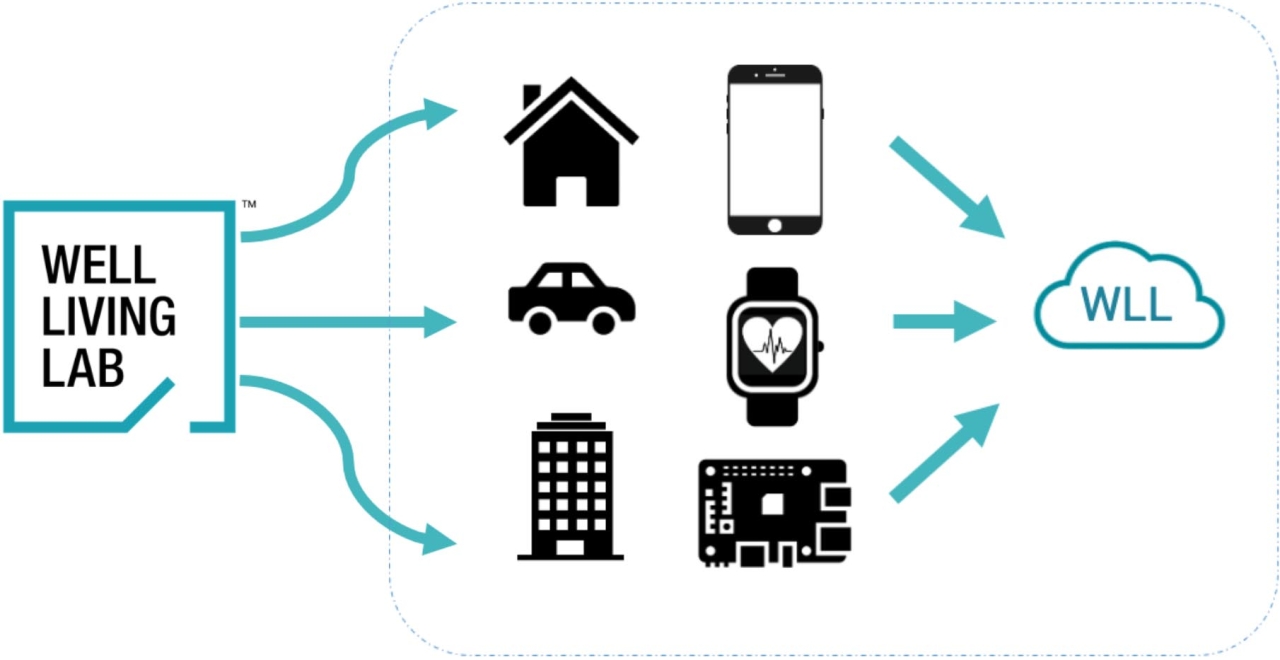A People-Centered Approach to Healthcare Delivery at the Well Living Lab
Well Living Lab Executive Director Barbara Spurrier speaks about healthcare innovation, the WLL research framework and current studies on healthy living, aging and working.
Published 05-24-22
Submitted by Delos

Summary
Innovating Healthcare Delivery: A People-Centered Approach A Q & A with Well Living Lab Executive Director, Barbara Spurrier, M.H.A.
In this Q & A, WLL Executive Director Barbara Spurrier, M.H.A., speaks healthcare innovation, the WLL research framework and the current focus on healthy living, healthy aging and healthy working. Founded as a Delos and Mayo Clinic collaboration, the Well Living Lab (WLL) is the only lab of its kind that uses exclusively human-centered research to study the impact of the built environment on our health and well-being. Located in Rochester, MN, this sensor-rich, reconfigurable, real-world simulated environment enables scientists to identify correlations and practical applications that can provide long-term health and wellness benefits.

Q: The Well Living Lab studies how indoor environments can improve human health and well-being. How innovative is this approach?
A: The Well Living Lab (WLL) is really a unique initiative: it’s the first scientific research center exclusively applying human-centered research to understand the interaction between healthcare innovation, well-being and the indoor environment. We spend 90% of our time indoors and studying how this impacts our health is quite novel. WLL started as a big dream with Paul and Peter Scialla to build something that’s never existed before. Delos brought the building sciences while Mayo Clinic brought the health sciences, and the Well Living Lab was created to take a human-centered research approach.
Discovery, translation, application: this is the Mayo Clinic research framework. With their blessing, this is also the approach we have adopted in our Lab. Discoveries are really important, but if our experiments work and we prove our hypotheses, we need to translate and apply our insights to positively impact human health, society and hopefully business models as well. There is a tremendous opportunity to work across WLL and Delos to apply discoveries to advance health and well-being through science-based solutions.
Q: Could you tell us a bit about your background and how it led you to the Lab?
A: My undergraduate study was in Economics and English, and I have a Masters in Healthcare Administration from the University of Minnesota School of Public Health. I completed my training in Africa, at the Veterans Administration, HealthPartners and then Mayo Clinic. At Mayo, I held a range of roles in strategy and operations across the hospitals and clinics.
I’ve partnered with lead physicians and scientists throughout my career, representing the business and administrative side of things. My last key role at Mayo was working with my physician partner, Dr. Nick LaRusso, on building innovation. We were working on transforming the healthcare experience through new kinds of user-centered delivery models. The core value at Mayo is ‘the needs of the patient come first,’ so we were trying to really understand and better serve those needs, bringing in a design perspective.
In 2008, Mayo Clinic CEO Dr. Glenn Forbes asked Dr. LaRusso and I to apply our experience and passion for innovation to build a Center for Innovation (CFI) for all of Mayo Clinic. It was an awesome honor and a real pinch-me moment! Dr. LaRusso and I collaborated across Mayo and with external partners to build the CFI with a design-based, diverse team and enabling infrastructure; platforms and project portfolios with a demonstrated return on investment; and a competency and curricula of innovation. Current Mayo Clinic President and CEO Dr. Gianrico Farrugia, who served as the CFI Associate Medical Director, then evolved innovation across Mayo as a distributed rather than a center-based model. While the CFI was eventually sunsetted, innovation is now a core value at Mayo Clinic.
Dr. LaRusso and I were connected with Delos in 2012 by Dick Gephardt, former United States Representative and House Majority and Minority Leader. Mr. Gephardt is a friend and thought leader in both organizations and had the early vision to bring Mayo Clinic and Delos together. In conversations with Pete and Paul Scialla and Rich Macary, we saw a perfect confluence of design, innovation, health and wellness. It felt like a dream to imagine the possibilities of bringing together building and health sciences in a first-of-its-kind Lab. The Lab opened in mid-2016, and I knew my life and career path were forever changed. When WLL received the 2018 Edison Award in Disruptive Innovation, Mr. Gephardt joined our Delos and Mayo Clinic team at the gala celebration!
Today, WLL boasts an extraordinary, multidisciplinary team. We still have a number of Mayo Clinic leaders on staff, from Chair of the WLL Scientific Advisory Council Dr. LaRusso to Research Director Dr. Bruce Johnson to Medical Director Dr. Win Shen, an accomplished Mayo Clinic cardiologist. Our research infrastructure is also very much supported by Mayo Clinic, with access to their resources like the Institutional Review Board, as our campus is located adjacent to theirs. And of course, Delos supports the scientists, researchers, analysts, technologists and operations staff that do the work every day.

Q: What is the Lab’s research process, and what research areas is it focusing on these days?
A: Our research roadmap is currently anchored and organized around three themes: healthy living, healthy aging and healthy working. It’s sort of a Venn diagram with a human in the middle. If you think about what’s happening now with offices for example, healthy living and healthy working overlap. Similarly with aging, we’re looking at centers and facilities that house communities, and we’re also looking at pre-retirement prevention of chronic illness and aging in place, at home. Our current areas of exploration across our research portfolio are cognitive function, stress, performance and productivity, air quality, lighting and sleep.
Our field study platform, developed by our talented technologists, enables us to conduct research anywhere in the world with an internet connection. Covid-19 has, of course, slowed things down, but we’re now back on track and have some exciting projects underway. Our research activities are guided by unanswered questions from science and the unmet needs of people. We always start with a literature review: if something’s already been done and we can’t add anything to it, we move on. But much research still needs to be done at the intersection of health, well-being and indoor environments.
It’s always helpful to start our research in the Lab because we can control everything in our simulated environments. We have office spaces, residential spaces where people can actually sleep and live in small apartments, and each environment can be reconfigured to suit the study. For our recent classroom air purification study, which was featured on Good Morning America, we transformed our office environment into a simulated classroom environment. We will get even closer to accomplishing our ‘discovery, translation, application’ process by going into the field and working in real-world environments like senior living facilities. This helps us expand our learning and do further scaling.
Right now, we’re doing studies on clinician burnout and acute stress with a more general population: one in the Lab and one in the field. Through these studies, we’re testing features of MindBreaks to measure what actually happens when we’re under stress and when we destress. These initiatives on clinician burnout and restoring joy in the clinical practice are critical given the magnitude of the problem (burnout is currently at a level we’ve never seen before).

Q: Some of your studies are conducted in collaboration with Well Living Lab Alliance members; could you speak a little about this?
A: We formed the Well Living Lab Alliance when the Lab first launched, identifying organizations worldwide that align with our mission. Alliance members pay a fee to join, and if we have a shared idea about research, we create a sponsored research agreement. For example, with healthy aging, we’re working with our Alliance member, Harrison Street, on a potential research project right here in Minnesota.
We’re working with another Alliance member to extend our classroom air purification study to an assisted living environment in Rochester. The study will focus on the impact of portable air filtration on airborne particle concentration, spread and/or accumulation on surfaces.
In terms of healthy buildings, we’re looking to study how ventilation and filtration may improve cognitive function, productivity, biometric outcomes, environmental perception and neural activity. When we think about how much we spend on staffing people in buildings and the impact environmental factors have on our health, the expenses can be huge. We’re trying to understand how to improve performance and productivity and create healthier buildings in a way that’s never been done before. Another upcoming Alliance collaboration under discussion is to extend our Lab to a smart home environment, which is an exciting opportunity to conduct our research with people in an actual living environment. Our hope is to unveil the project in October 2022 during our annual Well Living Lab Alliance Summit.
A big part of my job is building partnerships, whether with industry leaders or academic groups. We are fortunate to be able to tap into the great knowledge and expertise at both Delos and Mayo Clinic, and extend our work through industry, alliance and educational partnerships.

Q: Innovation has been integral to your career path, hasn’t it?
A: Absolutely. I think back to my first conversations with Delos, sitting in the room with physicians and other leaders and digesting the fact that we spend 90% of our time indoors. Before that, I’d always been on the healthcare delivery side of things: when patients were sick or something was going wrong, we would try to do everything possible to bring them back to a state of health. So for me, moving to the preventive side was about channeling my passion and energy for innovation to build out a whole new model. It is a massive opportunity to reimagine health and healthcare delivery, shifting the center of gravity to the person/patient with the tools they need, wherever and whenever, to optimize their health.
The healthcare delivery system is so broken; it’s thrilling to imagine an ecosystem that can connect the dots and offer science-based solutions to really empower people on their lifelong health journey. I am so grateful and honored to be part of this as healthcare spending in the United States is not coming close to producing the desired health and life expectancy outcomes. There is so much work yet to be done to help people live their best, healthiest lives.
Thank you so much for speaking with us!
Visit the Well Living Lab to read more about their research framework, previous studies and publications, and ongoing work and innovations!
AUTHOR
Radhika Singh
Senior Copywriter, Marketing
Radhika Singh is a writer and editor focusing on how Delos brings health and wellness to the forefront through lifestyle design and tech interventions.
View original content here

Delos
Delos
As the pioneer of Wellness Real Estate™, Delos is transforming our homes, offices, schools, and other indoor environments by placing health and wellness at the center of design and construction decisions. Delos helps create spaces that actively contribute to human health, performance and well-being by marrying the best innovations in technology, health, science, and real estate. The Delos platform includes programming, design, consulting, research, and an array of innovative solutions and technologies designed to improve health and well-being. More information on Delos is available at www.delos.com.
More from Delos

